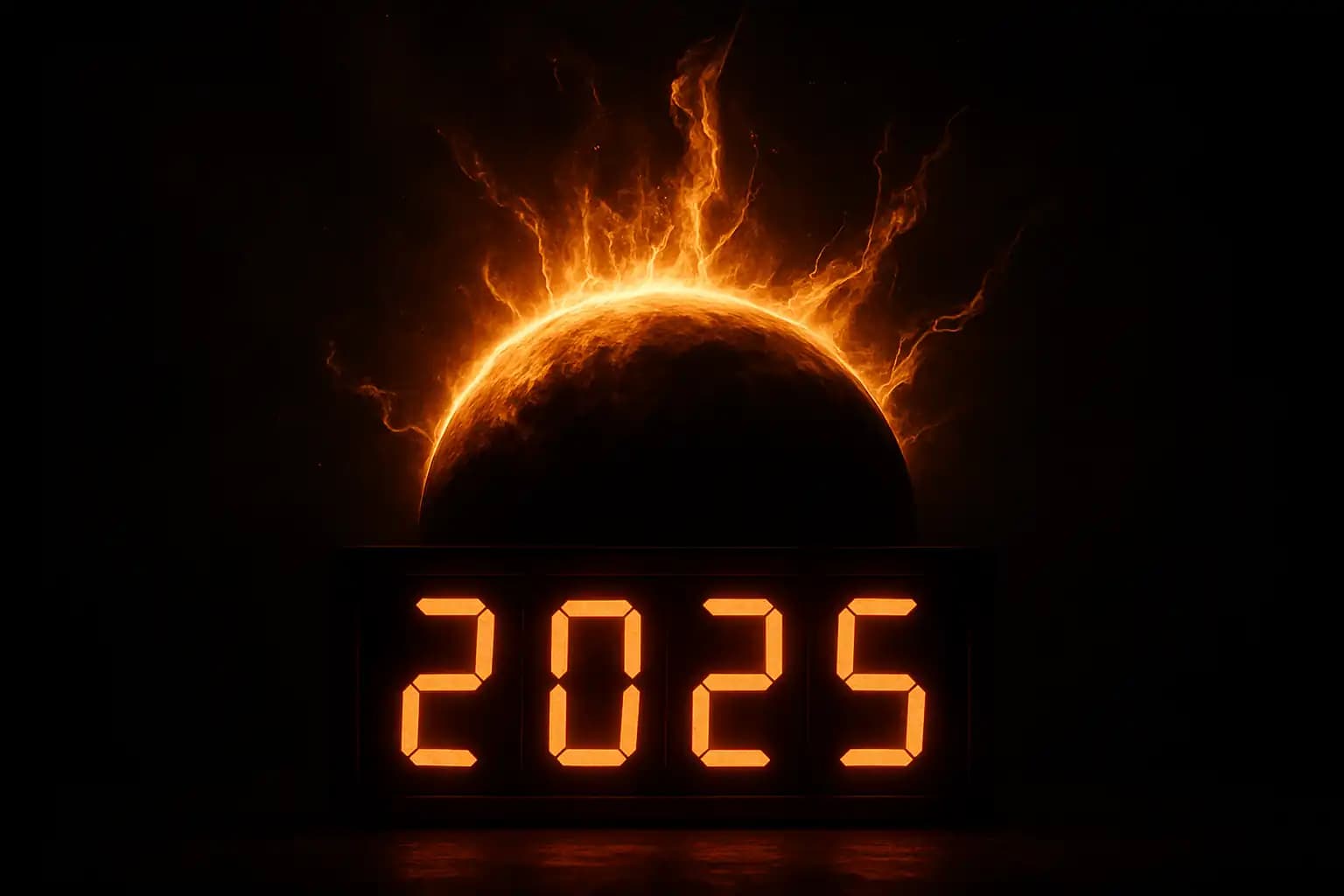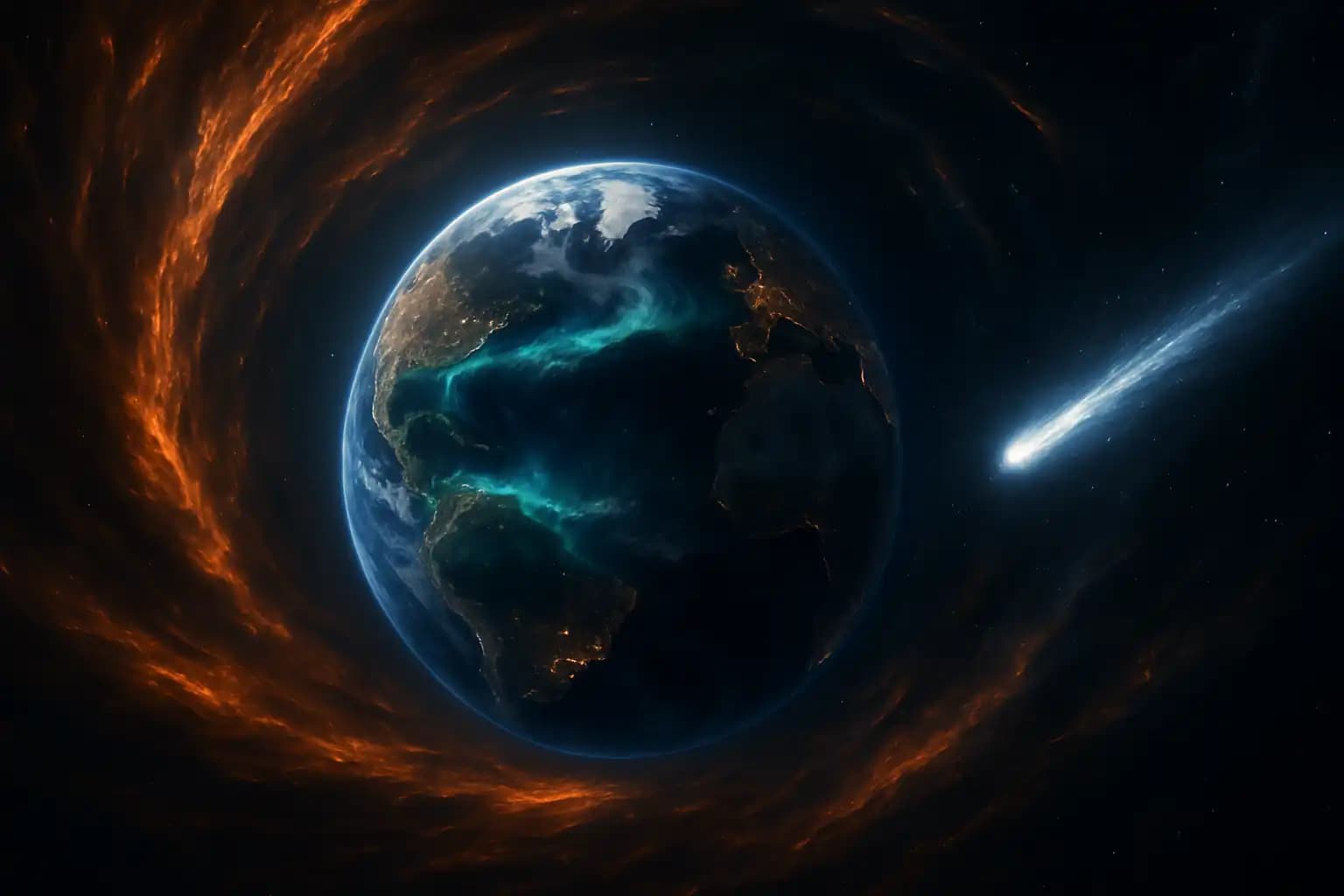Feel the algorithmic air. Search engines auto-complete “2025” with terms like “prophecy,” “solar storm,” and “economic reset.” TikTok seers stream live hourly, while astrophysicists quietly extend risk assessments. What began as fringe chatter now splashes across brokerage research and government briefings: next year might be historic for the wrong reasons.
The tipping point came when a Bulgarian clairvoyant, dead for nearly three decades, crashed global news feeds yet again. Baba Vanga’s name anchors forecasts that include super-flares from Solar Cycle 25, geopolitical spirals outlined in countdown-to-2025-07202024, and digital anxieties explored in ai-armageddon-the-digital-arsenal-that-might-just-save-us-11272023. As January approaches, the overlap between folklore and hard science feels unsettlingly tight.
Baba Vanga’s 2025 Visions Go Mainstream
Baba Vanga’s rising fame rests on predictions mapped to specific years. For 2025, she foresaw either a devastating European war or the start of an extinction timeline, depending on the translation. When Euronews unpacked those claims in December—its article shot to the top of Brave Search—mainstream audiences took notice, as did markets. Traffic surged on conspiracy hubs buzzing from false-messiah-panic-07122024, turning eschatology into a data-mining gold rush for social media platforms.
Journalists attempted debunking, but virality trumped nuance. Hashtag #Vanga2025 topped a billion views, pulling even policy analysts into Google Scholar rabbit holes. One National Security Council aide conceded, off the record, that “belief is a strategic variable.” Langley learned that lesson years ago, as noted in the-doom-scroll-of-2025-shocking-revelations-await-11272023; ignoring prophetic narratives risks missing their real behavioral impacts.
Solar Cycle 25: Space Weather Threat Meets Prophecy Fever
While mystics fuel clickbait, astronomers track sunspots. The official NOAA panel projects the peak cycle in mid-2025, echoing the agency’s 2019 forecast. Yet the Sun refuses to follow the script. A NASA blogpost—also ranking first on Brave Search—admits Solar Cycle 25 is outperforming predictions. In plain English: more flares, stronger geomagnetic storms, and higher odds that a CME as fierce as 1859’s Carrington Event could damage satellites and grids.
This prospect coincides with Baba Vanga’s cryptic note about “darkness over the planet.” Engineers quoted in south-atlantic-anomaly-sign-of-an-impending-cataclysm warn that even moderate storms risk cascading blackouts because modern networks rely on ultralight transformers. With a growing constellation of broadband satellites facing radiation-belt swelling during solar maxima, 2025 looks like a live-fire drill for global connectivity.
Converging Doom Narratives: From Demons to Data Models
Why does 2025 attract so many warnings? Confirmation bias plays a role, amplified by social algorithms. Yet structural overlap exists between spiritual and scientific predictions. Substack essayist Sam Kriss catalogs this convergence in a viral post—another Brave Search topper—noting that climate tipping points, AI-ethics deadlines, and election cycles converge next year. His argument: a crowded milestone calendar invites apocalypse narratives because humans struggle with compound uncertainty.
Corporations share that struggle. A recent Deloitte memo, leaked to reporters after surfacing on the same Discord channel that discussed bunkered-beneath-07162024, urges Fortune 500 boards to treat 2025 as a stress-test horizon for supply chains. Semiconductor executives privately concede that even a mild geomagnetic storm could freeze just-in-time logistics already bruised by pandemic aftershocks.
The Speculative Market Machine Loves a Date
Numbers drive Wall Street more than prophecies, but a fixed date influences option pricing. When Baba Vanga’s name started trending with “2025,” volatility indices edged up. Analysts flagged this chatter in the same models monitoring rumors of war in flashpoint-himalayas-07202024. Hedge funds built “solar-storm baskets” of utility shorts and satellite-insurance longs, effectively monetizing doomsday chatter.
The interplay between hype and hedging introduces a self-reinforcing loop. If investors brace for solar storms, insurers raise premiums on orbital assets. That cost jump can delay satellite launches, degrading the very comms net society needs if geomagnetic storms strike. Doom narratives thus shape risk landscapes long before any flare leaves the Sun.
Can Science and Faith Co-exist in Crisis Planning?
Academics once dismissed prophecy as superstition, but resilience studies now recommend cultural literacy alongside climate models. One University of Toronto paper cites the Baba Vanga phenomenon as “soft data” critical for gauging public compliance during disasters. Emergency-management agencies quietly integrate such insights into message framing, echoing tactics used during pandemic lockdowns.
This approach aligns with a broader trend: using narrative psychology to steer behavior. However, it risks backlash if communities perceive manipulation. The ethical tightrope stretches across domains, from AI regulation—contextualized on runaway-minds-ai-07152024—to disaster preparedness. Policymakers must decide whether to leverage apocalyptic belief for compliance or confront it with transparency.
Blueprints for a Post-Prophecy World
Assume pessimists overshoot and 2025 arrives without solar EMPs or continental wars. Even then, the preparatory churn triggers lasting upgrades. Utilities installing geomagnetic blockers will still enjoy fortified grids; satellite operators adopting radiation-hardened chips will cut future replacement costs. Likewise, public-health agencies rehearsing misinformation countermeasures gain valuable muscle memory for the next bio-threat.
However, if just one doom scenario occurs—a grid-crippling flare, a currency-shaking cyberhack, or the European conflict Vanga foresaw—those upgrades shift from luxury to lifeline. Either outcome justifies taking the hype seriously, a logic increasingly echoed by think-tank briefs and NGO grant calls.
Final Broadcast from the Bunker
I won’t claim clairvoyance. I am just the crank behind the microphone urging you to match prophecy with planning. Read the sunspot chart. Audit your local transformer inventory. Diversify data centers geographically as suggested in dragon-endgame-06212024. And bookmark Unexplained before the next CME fries your fiber line.
Whether you believe Baba Vanga channeled demons or trust NOAA dashboards, one fact unites both crowds: ignorance never helps anyone survive a storm. 2025 is coming, and most people don’t realize what’s coming with it.




